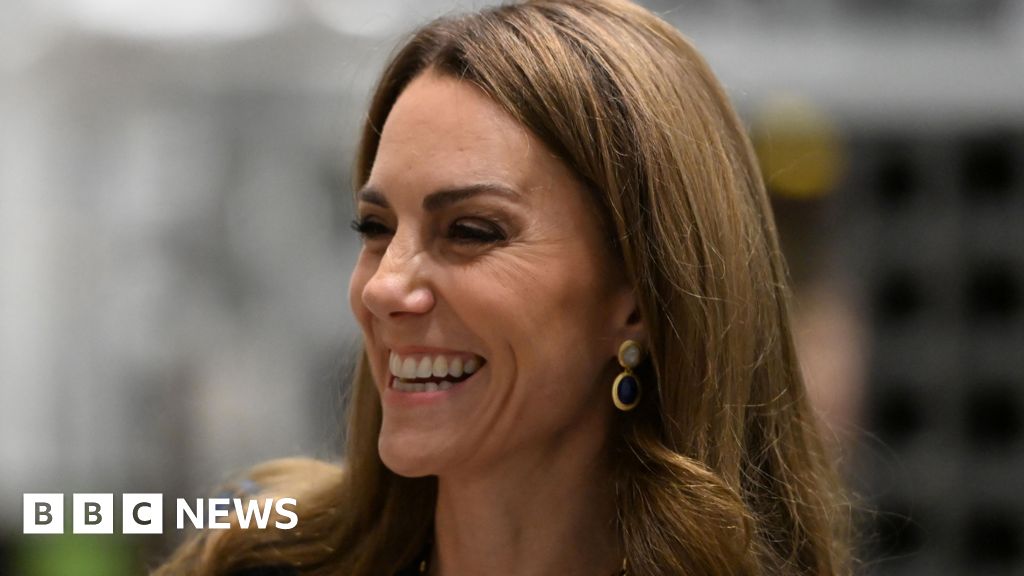ARTICLE AD BOX
 Image source, The Joiners
Image source, The Joiners
The 'wall of fame' at Southampton's Joiners club
By Mark Savage
BBC Music Correspondent
There are more than 1,000 local, independent music venues dotted around the UK.
They're the places where bands cut their teeth, working out how to control a crowd, pace a setlist, and how to cover your tracks when the singer forgets the words.
There's no money and even less glory. But, even in the era of viral TikTok hits, those small, early gigs are a crucial step for a career in music.
Filled with gratitude, bands often repay the favour by defacing the venue in a bid for posterity. And over time, those graffitied walls and dog-eared guest books become a potted history of British rock.
To mark Independent Venue Week, we asked five venues to share the scribblings of rock and pop's biggest stars - and to reflect on the tough situation many of them face during the cost of living crisis.
The Joiners, Southampton
Image source, The Joiners
Image source, The Joiners
Ricky Bates, venue owner & booker: "We opened in 1968 but the record of who played back then is very blurry. There's a story of Jimi Hendrix dropping in and jamming with people on his way to the Isle Of Wight Festival in 1970, but nobody had cameras and whatnot back then.
"These days, we have walls of photos and posters - but before the pandemic we were doing 275 shows a year, so we had to start choosing the ones that had a story behind them.
"Manic Street Preachers is a big one. They played here back in the day when talent scouts actually came to shows, and that night there were all these Rolls Royces parked outside the front door - which is nuts if you know the area. Anyway, the Manics played an incredible gig and they signed their first major label deal in the basement with all the graffiti afterwards."
"And then there's the Cranberries. Back in the 1990s, people used to book shows by fax, and they would sometimes sign contracts a year in advance. And in the time that passed between booking the show and playing it, they'd become huge and they were on Top Of The Pops and whatever.
"So they turned up to the venue and they didn't like the PA system and they cancelled, on the day of the gig. And so all these people turned up, obviously, and the band just sat upstairs refusing to play."
Queen's Hall, Edinburgh
Image source, Queen's Hall, Edninburgh
Image source, Queen's Hall, Edninburgh
Emma Mortimore, Marketing & Development Manager: "We started a guestbook in 1979, and the Queen signed it when she opened the venue. That was going until the early 2000s and it has a whole wealth of people in there.
"Nina Simone's signature just blows me away. She was one of those artists where you were never quite sure who was going to turn up: the happy Nina who wanted to play, or the Nina who was going to be a little bit angry and cross at the audience for even being there.
"But apparently she was a delight to watch - and that's an effect our auditorium has on a lot of artists I think. I love that she wrote very carefully in the book, 'Doctor Nina Simone'."
"A while ago, before my time, they started asking people to draw a picture as well as their signature, which is quite a big ask. The picture by Natasha [Bat for Lashes] for her album The Bride is really top of the range... More often it's a thank you and an autograph."
Rough Trade, Nottingham
Image source, Rough Trade
Image source, Rough Trade
Sam Heaton, Events Manager: "We do about 300 shows a year and with so many high-calibre names coming into the venue, the walls are filling up pretty quick.
"I've had to start telling bands that modesty is the thing. The bigger the signature, the more people think they're k***heads! It might seem cool in the moment but, the reality is, those are the first ones we'll paint over.
"My favourites? Wet Leg's is really fun. And The Feeder one is cool because they said thank you and stuff, but I'm biased because I really like Feeder.
"Their singer, Grant, was really cool. They played an album release show here and the next time they were in Nottingham, to play at Rock City, he walked to the shop and asked for me, and said he'd like to put me on the guest list. But it was my day off, so I had all the staff phoning me going, 'You'll never guess what's happened?!'"
The Adelphi, Hull
Image source, The Adelphi, Hull
Image source, The Adelphi, Hull
Established in 1984, Hull's Adelphi club has hosted dozens of bands on the cusp of fame; and their archive still contains the contracts Oasis and Radiohead signed in the 1990s.
Colin Greenwood, Radiohead (writing on the Adelphi's official website): "We played twice at the Hull Adelphi and I loved them both. At the end of May, 1992, I remember rolling up in the rusty white van, and unloading our purple-boxed gear round the back, which was where the audience came in.
"We all marvelled at the pool table in the front room, and were grateful for a fiver each from Paul Jackson to eat out at a delicious local Thai restaurant.
"The second time we played, in February 1993, we had the beginnings of some success with Creep, but what made the night most memorable was that we were staying in the local Camponile motel, instead of the usual five-hour slog back to Oxford. What luxury!
"Unfortunately, we shared the hotel with a visiting troupe of Chippendales, who were stalked by a posse of older women at the hotel gates. Tired from our show at the Adelphi, we were kept up by the sounds of screaming and vomiting from their floor. Truly rock and roll!"
The Cavern, Exeter
Image source, Exeter Cavern
Image source, Exeter Cavern
Dave Goodchild, co-owner: "We opened up around 30 years ago, and our roots are in the punk and hardcore and DIY scenes. Our first show was an American band called Rival Schools back in 1991.
"We also put on some of Muse's first shows back in the '90s. They actually got signed in the Cavern after one of those nights. So last year, they asked to do a return show in the venue where they started."
After the show, lead singer Matt Bellamy spotted a "We Are The People" sign in the green room, which is based on a pin-badge Robert DeNiro wears in Taxi Driver. Grabbing a magic marker, he altered the text to reference Muse's latest album, Will Of The People.
"When you see someone local like that doing well, it's great to feel part of it. The emotional component is seeing that the model works and it's a good place for bands to learn the ropes and meet other artists.
"So we've hosted early shows by Coldplay, The 1975, Bastille... La Roux had her first gig at the Cavern. And they've all abused that room."

 2 years ago
56
2 years ago
56








 English (US) ·
English (US) ·